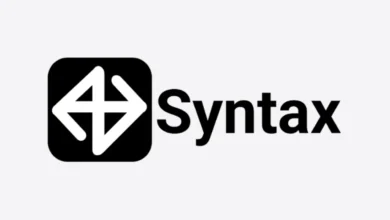
Trading has become increasingly popular over the years thanks to the rise of technology and online trading platforms. With so many different forms of trading available, it can be difficult for beginners to know where to start. In this complete guide, we’ll delve into one particular form of trading – swing trading. We’ll cover everything from what swing trading is and its benefits, to how you can open your own swing trading account step-by-step.
What is Swing Trading?
Swing trading is a method of trading that attempts to capture gains in a stock or any financial instrument over a period of time that can range from overnight to several weeks. This trading style is fundamentally based on technical analysis but also considers the underlying market trends. Swing traders utilize various strategies to find and take advantage of these price swings.
Benefits of Swing Trading
Swing trading comes with numerous benefits. For starters, it’s less time-consuming than day trading as it doesn’t require traders to monitor the markets all day. It also offers significant profit potential due to the larger price moves targeted. Lastly, swing trading works well with a part-time schedule, making it an excellent choice for those who want to trade on the side.
Basics of Swing Trading
Swing Trading vs Day Trading
While both swing trading and day trading aim to profit from short-term price movements, they differ mainly in their time horizons. Day traders buy and sell within the same day, hence the name, while swing traders hold positions for several days or even weeks. As such, swing trading tends to be less stressful and time-consuming than day trading, making it a more suitable option for traders who prefer a slower pace.
The Profitability of Swing Trading
One question that often arises when discussing swing trading is its profitability. Like any form of trading, the profitability of swing trading largely depends on the trader’s skill and strategy. However, with careful planning and disciplined execution, swing trading can indeed be profitable. It’s important to note, however, that all forms of trading carry risk and there are no guaranteed profits.
How to Open a Swing Trading Account
Step 1: Determine the Type of Swing Trading Account You Need
Before opening a swing trading account, it’s essential to determine what kind of account best suits your needs. Different brokers offer different types of accounts, each with its own set of features and requirements. Some common types of trading accounts include margin accounts, cash accounts, and retirement accounts. Each has its pros and cons, so do your research before making a decision.
Step 2: Compare Fees of Different Swing Trading Accounts
Fees can eat into your profits, so it’s important to compare the fees charged by different brokers before opening an account. Typical fees to look out for include commission fees, account maintenance fees, and withdrawal fees. Remember, the lowest fees don’t necessarily mean the best value – other factors like customer service and platform usability are equally important.
Step 3: Consider the Services a Swing Trading Account Offers
Aside from fees, consider the services offered by the broker. These may include research tools, educational resources, customer support, and the trading platform itself. A good broker should provide a robust trading platform with a wide range of tools to help you analyze the markets and execute your trades efficiently.
Step 4: Open a Swing Trading Account
Once you’ve chosen a broker, the next step is to open an account. This typically involves providing personal and financial information and possibly completing a questionnaire about your trading experience and goals.
Providing Personal Information
You’ll need to provide basic personal information such as your name, address, and date of birth. You may also be asked to provide a copy of a government-issued ID for verification purposes.
Providing Financial Information
Most brokers will ask for information about your employment status and income. This is to ensure that you have the financial means to trade and can handle potential losses.
Swing Trading Strategies
Pullbacks and retracements are common occurrences in the market and understanding them can significantly improve your swing trading. A pullback occurs when the price moves against the prevailing trend, but doesn’t necessarily signal a reversal. Retracements, on the other hand, are temporary price reversals within a larger trend. Identifying these can provide excellent entry points in swing trading.
Recognizing Support and Resistance Levels
Support and resistance levels are key concepts in technical analysis and are crucial in swing trading. Support refers to a price level where buying activity is strong enough to stop the price from falling further, while resistance refers to a level where selling activity is strong enough to prevent the price from rising further. These levels serve as indicators for potential price reversals and can guide your entry and exit points.
Use Moving Averages, Fibonacci Levels and Technical Indicators
Moving averages, Fibonacci levels, and other technical indicators can help identify trends and predict future price movements. When used correctly, these tools can enhance your swing trading strategy and increase your chances of success.
Risk Management in Swing Trading
Risk management is crucial in any form of trading, including swing trading. This involves setting stop-loss orders to limit potential losses, diversifying your portfolio to spread risk, and only risking a small percentage of your capital on any single trade.
How to Monitor Your Position
Monitoring your position is vital in swing trading as it allows you to track your performance and make necessary adjustments. This can be done through the trading platform provided by your broker. Make sure to regularly review your open trades and check for any significant market news that may impact your positions.
When to Exit Trade
Knowing when to exit a trade is just as important as knowing when to enter. Set a target price at which you’ll sell for a profit and a stop-loss price at which you’ll cut your losses. This not only helps secure profits but also limits potential losses.
Conclusion
Swing trading is a viable trading style that offers significant profit potential. However, like all forms of trading, it requires knowledge, skill, and discipline. By understanding the basics of swing trading and following the steps outlined in this guide, you can start your journey toward becoming a successful swing trader.












